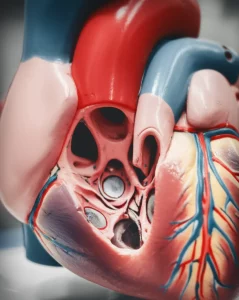Navigating the Maze: Youth Diabetes, Adult Care, and the Hidden Hurdles
Hey there! Let’s chat about something super important for young folks growing up with diabetes: that big leap from seeing your pediatric doctor to heading into the world of adult healthcare. If you or someone you know has youth-onset diabetes, you know it’s a journey with its own set of challenges. Managing blood sugar, keeping up with appointments, dealing with the daily grind – it’s a lot, even before you throw in becoming an adult!
Now, imagine you’re a young person, maybe hitting those tricky teen years or just stepping into your twenties. You’ve likely been seeing the same friendly pediatric team for years. They know you, your family, your history. Then, bam! You’re told it’s time to transition to adult care. Sounds simple enough, right? Well, for many, it’s anything but.
This transition period is crucial. It’s when young adults are figuring out independence, taking on more responsibility, and often dealing with the emotional rollercoaster of emerging adulthood. Adding complex health management to that mix can be tough. We know this transition can sometimes lead to bumps in the road, like blood sugar levels going a bit haywire.
I recently came across a really interesting scoping review that dug into this topic. A scoping review is like a big searchlight, looking across lots of studies to see what we know and, more importantly, what we *don’t* know. This one specifically looked at the socio-ecological factors – basically, all the different layers of influence from your personal life, your relationships, your community, and even society at large – that affect this transition for young people with diabetes.
They wanted to see how these factors play out for youth with type 1 diabetes (Y-T1D), which we’ve studied quite a bit, and compare it to youth with type 2 diabetes (Y-T2D), where the picture is less clear. What helps? What gets in the way? And where are the big knowledge gaps, especially for Y-T2D?
The Research Gap: A Stark Reality
So, what did they find? Well, the first big takeaway is a bit eye-opening. Out of 104 articles they looked at focusing on this transition, a whopping 88% were about Y-T1D. Only 6% compared Y-T1D and Y-T2D, and a tiny 2% focused *only* on Y-T2D. That means we have way less information specifically about the transition experience for young people with type 2 diabetes.
Despite this imbalance, the review looked at how often studies reported on different socio-ecological factors across both groups. They found that studies, regardless of whether they included Y-T2D or not, looked at similar *types* of factors, but the *specific* factors and how they impacted the transition often differed or weren’t reported for Y-T2D.

Looking at the Big Picture: Societal Factors
Let’s break down these factors using that socio-ecological idea. First, there’s the societal level – the big stuff happening around us. This includes things like access to healthcare, economic stability (can you afford your meds and appointments?), education, neighborhood environment, and social support systems. For Y-T1D, studies looked at all these, even poverty and food insecurity. Interestingly, structural bias wasn’t really studied in Y-T1D transition.
For Y-T2D, studies also looked at many of these – access, economic stability, social support, and neighborhood environment. But they *did* report on structural bias and poverty as challenges, which is a key difference. What wasn’t reported for Y-T2D? The impact of food insecurity during transition. This level highlights how things like poverty and bias can be significant hurdles for young people with Y-T2D moving into adult care.
Clinic Culture and Connections: Health Cultural Factors
Next up is the health cultural level. This is about attitudes towards healthcare, cultural beliefs around health, and how clinics and providers operate. Things like having a multidisciplinary clinic (where you can see different specialists in one place) or easy access to adult healthcare providers were found to be facilitators – they make the transition smoother, especially for Y-T2D.
Studies in both groups looked at attitudes towards healthcare, cultural attitudes, and provider practices. Multidisciplinary clinics were also examined. It seems that having a supportive, accessible healthcare environment is crucial for a good transition experience.
Inside Our Heads: Psychological Factors
Now, let’s talk about the psychological stuff – how young people are feeling. This includes things like anxiety, fear, depression, stress, and even resilience. For Y-T1D, there’s a good amount of research looking at depression, anxiety, and even things like disordered eating behaviors during transition.
But here’s another big gap: for Y-T2D, very few studies looked at mood symptoms like depression and anxiety, or stress. The review found *no* studies looking at eating disorders, early childhood adverse events, or PTSD in Y-T2D during this transition period. This is a significant blind spot, as we know mental health plays a huge role in managing chronic conditions.

Making It Happen: Behavioral Factors
Behavioral factors are all about the actions young people take (or don’t take) to manage their diabetes. This includes self-management strategies (like diet, exercise, monitoring), medication adherence, scheduling and attending appointments, and even risky behaviors like substance use. For Y-T1D, lots of studies looked at self-management support and medication adherence.
For Y-T2D, studies also looked at self-management, appointments, and medication management. Barriers identified included social isolation and risky behaviors. Interestingly, the review didn’t find studies reporting on dietary choices and physical activity specifically during transition for Y-T2D. This highlights that while the *type* of behavior is similar, the specific challenges or focus might differ, and we need more data on Y-T2D behaviors.
The Real-World Impact and Unique T2D Hurdles
So, what happens during this transition? The review confirmed that for both Y-T1D and Y-T2D, the transition period can be associated with worsening glycemic control (those HbA1c numbers going up). Some studies showed higher odds of poor control or increased hospitalizations during this time, though results weren’t always consistent across all studies.
For young people with Y-T2D, the review highlighted some specific hurdles. Beyond the challenges shared with Y-T1D, they reported facing:
- Economic challenges
- Life transition stress
- Stigma and a sense of guilt
- Fear of being judged by others
- Structural bias
- Poverty and economic instability
- Difficulty accessing quality healthcare
- Challenges related to their neighborhood and social support
These factors, especially stigma and economic burdens, seem particularly prominent for Y-T2D, potentially magnifying the difficulties during transition. Remember, Y-T2D often comes with complications present *at diagnosis*, and managing it can involve a complex mix of lifestyle, oral medications, and injectables, making adherence tricky.
What Helps and What Hurts? Facilitators and Barriers
The review also identified some things that can help or hinder the transition, particularly for Y-T2D:
Facilitators (Things that help):
- Routine performance of household chores (interesting finding from one study!)
- Easy access to clinics located near the pediatric clinic
- Purposeful, age-appropriate diabetes education
- Being older when transferring to adult care
- Internet-based programs
- Having a multidisciplinary clinic
- Easy access to adult healthcare providers
Barriers (Things that hurt):
- Difficulty establishing rapport with new providers
- Abrupt transition to a new clinic
- Long waiting periods for appointments
- Relocation to a new environment
- Social isolation
- Risky behaviors (like substance use, previous incarceration)
- Lack of chore engagement (the flip side of the facilitator!)

The Big Picture e The Knowledge Gap
So, what’s the big takeaway from all this? The transition from pediatric to adult diabetes care is definitely a challenging time for young people with *both* type 1 and type 2 diabetes, influenced by a complex web of personal, social, and environmental factors. The review supports the idea that we need well-planned, systematic transition programs for *all* youth with diabetes.
However, the glaring issue is the huge gap in research specifically focused on Y-T2D. Only 8% of studies looked *only* at Y-T2D transition factors, and most of these were observational, not rigorous studies testing different transition programs. We know way less about the psychological and behavioral factors influencing transition in Y-T2D compared to Y-T1D.
Understanding the unique barriers and facilitators for Y-T2D is critical because the disease itself, its complications, and the social factors affecting young people with type 2 can be quite different from those with type 1. Y-T2D often affects young people from underserved communities who may face greater socio-economic challenges.
This review really highlights the need for more dedicated research into the Y-T2D transition experience. We need studies that:
- Explore the psychological impact (anxiety, depression, stress, trauma) in Y-T2D during transition.
- Investigate behavioral factors like diet, exercise, and complex medication adherence in Y-T2D transition.
- Systematically evaluate different transition programs designed specifically for Y-T2D.
- Look at culturally sensitive and structural factors that can guide health policy and programs.
Ultimately, the goal is to create dynamic, individualized transition programs that truly meet the changing needs of young people with Y-T2D. This means addressing not just the medical stuff, but also the mental health, social support, and systemic barriers they face. Targeted interventions that help young people navigate the healthcare system, build positive relationships with providers, reduce stigma, and address mental health symptoms are desperately needed to make this crucial transition a successful one.

It’s clear we’ve got a lot more to learn, especially for Y-T2D. But this review is a great step in mapping out what we know and showing us where we need to focus our efforts to ensure *all* young people with diabetes can transition to adult care smoothly and successfully.
Source: Springer







